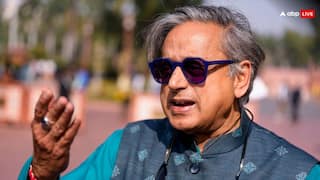Household Savings Drop To Record Five Decade Low In FY23
The savings declined to 5.1% of GDP in FY23, down from 7.2% in FY22 due to an income crunch coupled with a short-term surge in post-pandemic consumption.

The net financial savings of households declined to a nearly five-decade low in the fiscal year 2022-23 (FY23), the data from the Reserve Bank of India (RBI) revealed on Monday. The savings declined from 7.2% in FY22 to 5.1% of GDP in FY23 due to an income crunch coupled with a short-term surge in post-pandemic consumption.
Meanwhile, household financial liabilities surged to 5.8% of GDP in FY23, up from 3.8% in 2021-22 (FY22), primarily driven by increased borrowing for consumption and real estate purchases, reported the Financial Express.
Net household assets decreased from Rs 22.8 trillion in FY21 (2020-21) to Rs 16.96 trillion in FY22 and further declined to Rs 13.76 trillion in FY23, the data revealed. Household debt remained high at 37.6% in FY23, compared to 36.9% in FY22. The subdued savings and higher borrowings were credited to stagnant or declining household and SME incomes in the face of rampant inflation, the report noted.
The recent RBI data on household finances raised concerns about the economy's short-term growth prospects. The data indicated that private consumption support for growth could be weaker than expected, and the private capital expenditure cycle appears delayed.
According to Nikhil Gupta, an economist at Motilal Oswal, the blend of sluggish income growth and declining financial savings driven by borrowings did not seem sustainable. “We believe that consumption growth is unsustainable. Whether it will be substituted by investments is not our base case, though the jury is still out. The household debt is the second-highest annual flow post-independence,” he added.
As per the RBI data, household savings decreased to Rs 13.76 trillion in FY23 from Rs 16.96 trillion in FY22. It's important to note that this trend might change if the economy accelerates and real incomes increase. Nonetheless, if savings do not substantially recover this year, it could affect both consumption and investments.
In a deviation from the usual pattern, private consumption final expenditure (PFCE) saw a year-on-year improvement of 6% in Q1FY24, surpassing 2.8% in Q4FY23 and 2.2% in Q3FY23, possibly influenced by reduced inflation. However, data for July and August indicated a mixed picture for consumption. Passenger wholesale car sales, auto retail sales, and air traffic performed positively, while wholesale two-wheeler and tractor sales, rail passenger traffic, aviation cargo, and consumer goods imports did not fare as well. The GDP data for Q1FY24 indicated that investment showed greater strength than consumption, and urban demand surpassed rural demand.
Based on corporate statements following the June quarter results, it was suggested that rural demand was not in decline but rather experiencing a gradual recovery. “Already, we find that rural indicators such as real rural wages and non-durables consumption, are weakening,” said HSBC India economist Pranjul Bhandari, as quoted in the report.
The recent upturn in commodity prices has positively impacted economic activity over the past few quarters. However, the escalating cost of crude oil, nearing $95 per barrel, has the potential to negatively affect consumption. Additionally, the agricultural output, which has fallen below expectations, may also impact rural demand, the report noted.
Also Read : Starbucks To Fight Lawsuit Seeking Damages Worth $5 Million Over Lack Of Fruit In It's Refresher Beverages





































